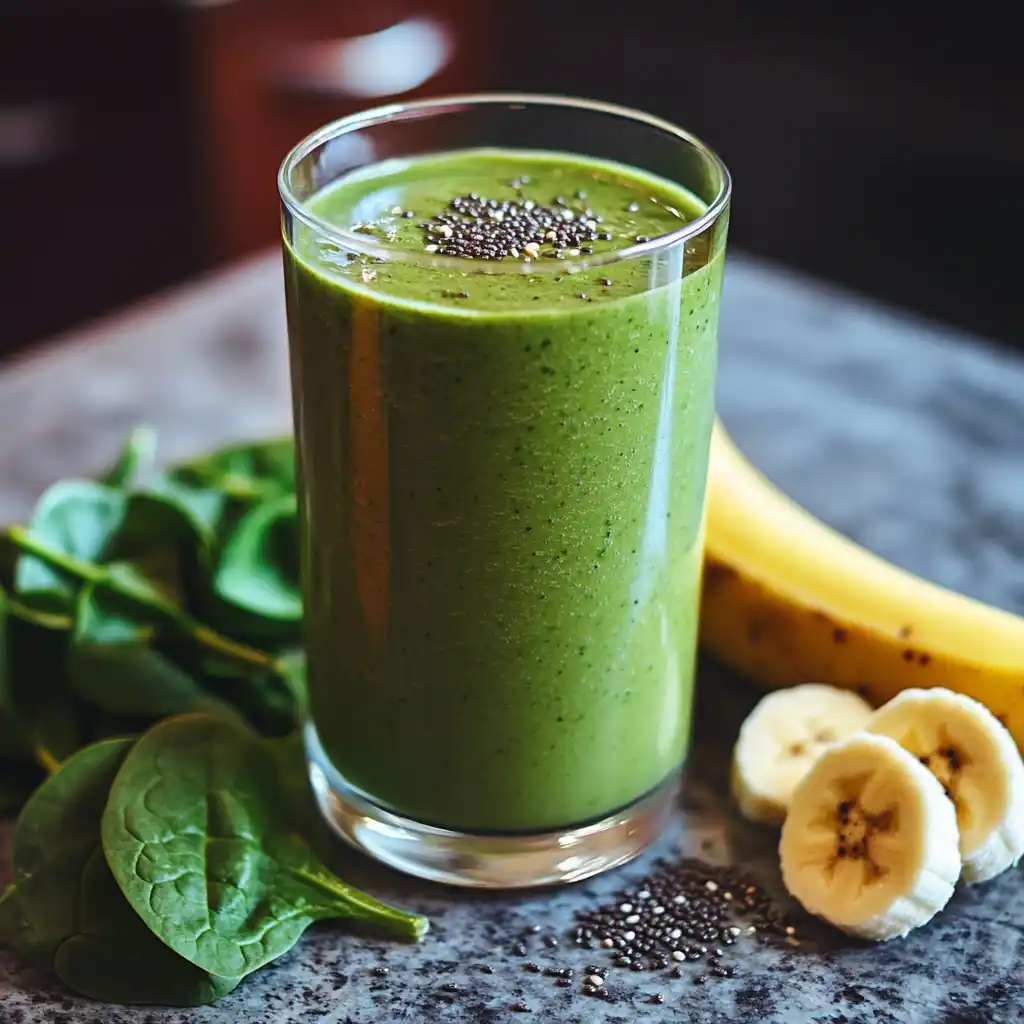Healthy smoothie recipes are more than just a health trend—they’re a smart, delicious way to fuel your day. Whether you’re trying to lose weight, boost energy, or just sneak in more fruits and veggies, smoothies make it easy. Packed with fiber, vitamins, and healthy fats, the right blend can be a full meal in one glass.
My passion for cooking started in a small coastal kitchen where food meant love, tradition, and connection. I grew up learning that a simple meal—like a smoothie—can bring comfort, joy, and wellness. Today, I create recipes that blend flavor with purpose, and smoothies are one of my favorite ways to do that.
In this guide, you’ll discover the best healthy smoothie recipes, plus expert tips on ingredients, benefits, and how to build the perfect smoothie for your goals. Don’t miss our Chia Water Recipe—it pairs perfectly with any smoothie routine.
Table of Contents
Why Healthy Smoothie Recipes Are a Smart Nutritional Choice
The Rise of Smoothies in Healthy Diet Culture
Healthy smoothie recipes have become a go-to option for anyone looking to improve their diet without sacrificing convenience. They offer a fast, flexible way to fuel your body with essential nutrients—especially when life gets busy. Instead of skipping meals or grabbing processed snacks, you can blend up a smoothie packed with fruits, greens, protein, and healthy fats in minutes.
Smoothies aren’t just for breakfast anymore. You’ll find them in post-workout routines, mid-day energy boosts, and even as meal replacements. Their popularity continues to grow because they make healthy eating accessible and customizable. From dairy-free to keto, gluten-free to high-protein, you can tailor every smoothie to fit your dietary needs.
And the best part? They taste good—really good. With the right combination of natural ingredients, you can create flavors that rival your favorite desserts while still keeping things healthy. Discover great ideas like this Healthy Meal Prep Guide to keep your week smooth and stress-free.
How Smoothies Support Digestive Health, Immunity, and Weight Goals
Smoothies are more than tasty—they’re functional. Many ingredients commonly used in healthy smoothie recipes actively support digestion. Think Greek yogurt, chia seeds, flaxseed, and leafy greens. These are rich in probiotics and fiber, helping your gut work better and keeping you fuller for longer.
For your immune system, smoothies make it easy to incorporate foods like citrus fruits, ginger, turmeric, and spinach—all known for their anti-inflammatory and immunity-boosting properties. A daily smoothie can help strengthen your body’s defenses, especially during cold and flu season.
If you’re looking to lose weight, smoothies can also be an effective tool. By replacing high-calorie meals or snacks with nutrient-dense smoothies, you can reduce overall calorie intake without feeling deprived. The key is balance—mixing fiber, protein, and healthy fats keeps you satisfied and helps manage hunger. Looking for inspiration? Try pairing your smoothie with this Apple Cider Vinegar Drink for Weight Loss, known to help control appetite and support metabolism.
Print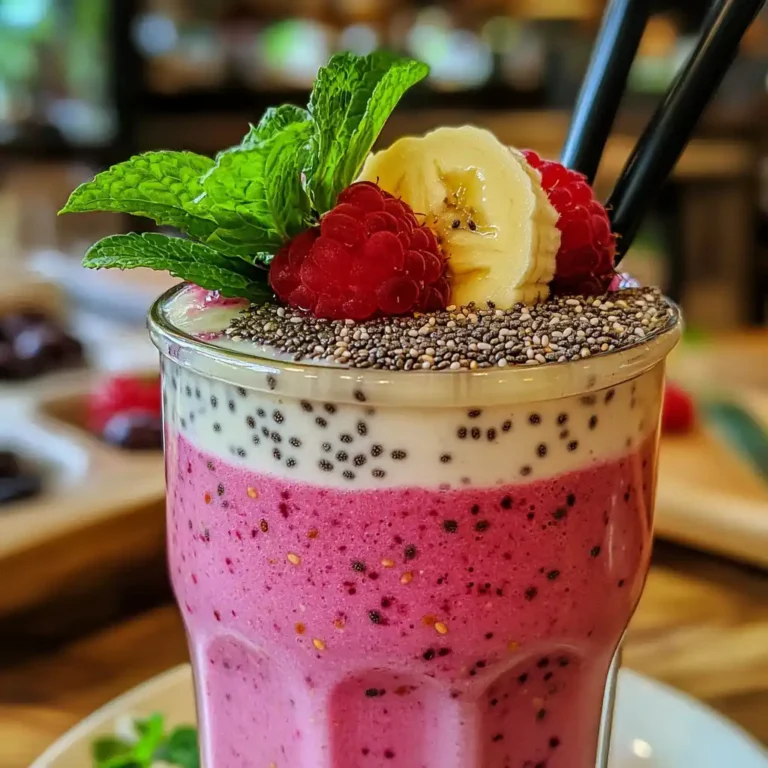
The Best Healthy Smoothie Recipes for Weight Loss, Energy & Wellness
These healthy smoothie recipes are packed with fiber, protein, and nutrient-rich superfoods to fuel your day. Whether you’re aiming to boost energy, support digestion, or lose weight, these blends deliver flavor and function in every sip.
- Total Time: 5 minutes
- Yield: 1 smoothie
Ingredients
- Choose One Fruit: Bananas, blueberries, strawberries, mango, apple, kiwi
- Choose One Veggie: Spinach, kale, cucumber, cauliflower, celery
- Choose a Liquid Base: Unsweetened almond milk, oat milk, coconut water, green tea, kefir
- Protein Sources: Greek yogurt, nut butter, protein powder, chia seeds, silken tofu
- Healthy Fats: Avocado, flaxseed, hemp seeds, almond butter
- Flavor Boosters (optional): Cinnamon, vanilla extract, ginger, turmeric, lemon zest
Instructions
- Add ¾ cup of your chosen liquid base to a blender.
- Add ½ to 1 cup of fruit and a handful of leafy greens.
- Include a protein source such as yogurt, protein powder, or nut butter.
- Add healthy fat like avocado, chia seeds, or flaxseed for satiety.
- Optional: Boost flavor with spices, herbs, or citrus.
- Blend until smooth and creamy. Adjust liquid for desired consistency.
- Serve immediately or store in a sealed jar in the fridge up to 24 hours.
Notes
Follow the Rule of 3: one fruit, one vegetable, and one protein or fat for balance. For weight loss, use low-sugar fruits like berries and keep portions measured. Use frozen fruit instead of ice for a thicker texture. Try blending your smoothie in stages for best results.
- Prep Time: 5 minutes
- Cook Time: 0 minutes
- Category: Beverage
- Method: Blended
- Cuisine: Healthy
- Diet: Vegetarian
Essential Ingredients for Healthy Smoothie Recipes
Superfoods to Boost Nutrient Value (Chia, Spinach, Avocado, etc.)
The magic behind most healthy smoothie recipes lies in using high-quality, nutrient-dense ingredients. If you’re aiming for smoothies that do more than just taste good, you’ll want to focus on superfoods that deliver fiber, antioxidants, and essential vitamins.
Chia seeds are a must-have in your lineup of healthy smoothie ingredients. Just one tablespoon adds omega-3s, protein, and fiber—keeping you full and energized. Spinach is another common favorite. It blends in easily, has almost no taste, and adds iron, folate, and magnesium to your smoothie. And for a creamy, satisfying texture, you can’t go wrong with avocado. It brings in heart-healthy fats and a dose of potassium.
Want to take your healthy smoothie recipes to the next level? Try adding:
- Flaxseeds – Excellent for digestion and hormone balance
- Cacao nibs – Boost energy naturally with antioxidants
- Maca powder – Known to enhance stamina and mood
These superfoods enhance both flavor and function, making your healthy smoothie recipes more filling and nourishing. Don’t miss our Matcha Chia Pudding Recipe, which uses some of these same ingredients in a delicious way.
Liquid Bases That Enhance Health (Almond Milk, Coconut Water, etc.)
The base of your smoothie does more than change the texture—it directly impacts the nutritional quality of your drink. For the healthiest outcomes, avoid sugary juices and opt for low-calorie, high-nutrient liquids that enhance the benefits of your healthy smoothie recipes.
Unsweetened almond milk is a solid base for most blends. It’s dairy-free, low in carbs, and works great in both green and fruity healthy smoothie recipes. Coconut water is another winner—rich in natural electrolytes and ideal for post-workout smoothies.
Other smart choices for smoothie bases include:
- Oat milk – Adds a creamy texture and plant-based fiber
- Green tea – Delivers antioxidants and a mild energy boost
- Plain kefir – Fermented, gut-friendly, and protein-rich
Each of these bases brings unique benefits and pairs well with the superfoods listed above. When combined properly, they help transform your healthy smoothie recipes into satisfying meals that support digestion, energy, and wellness.
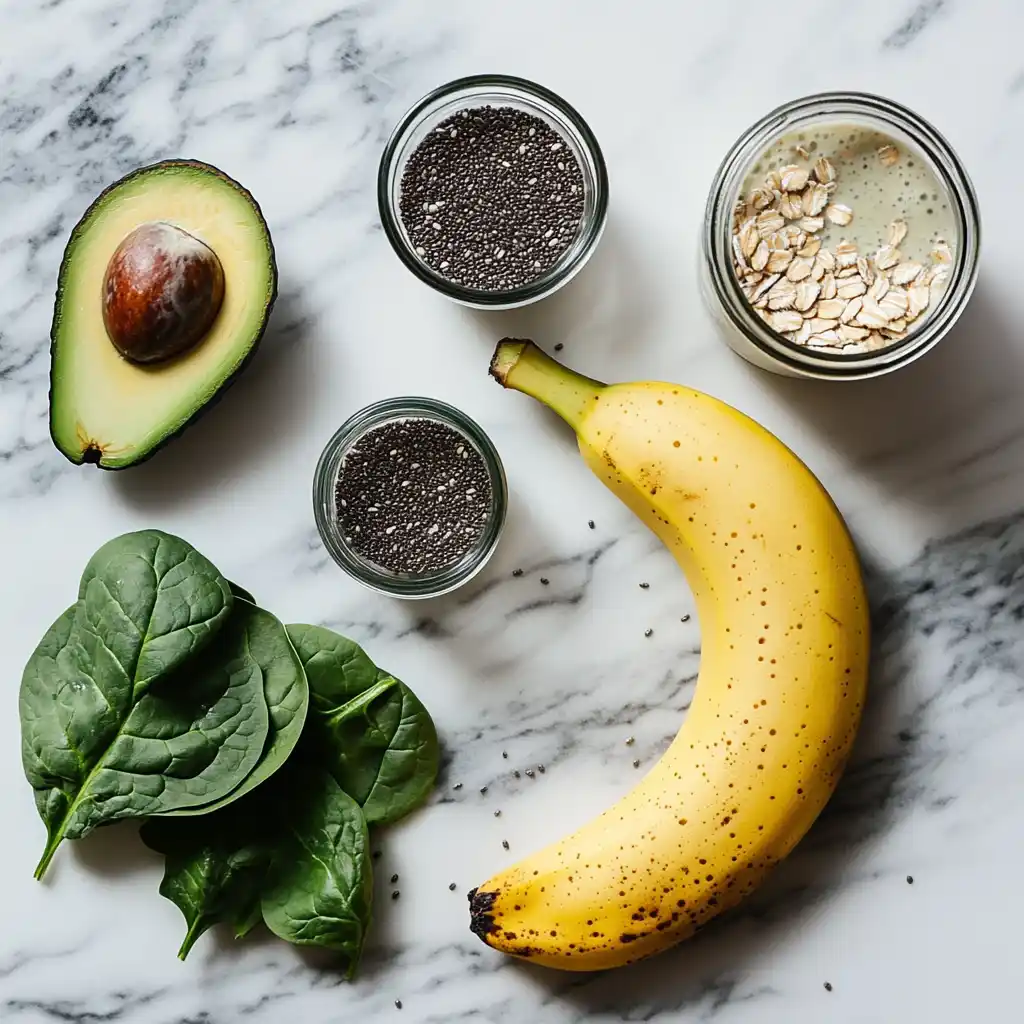
Whether you’re blending for breakfast or a midday snack, selecting the right ingredients is the first step to creating nutritious and delicious healthy smoothie recipes every time.
The Rule of 3 in Crafting Perfect Healthy Smoothie Recipes
What Is the Rule of 3 in Smoothies and Why It Works
When it comes to making healthy smoothie recipes that are balanced, satisfying, and nutrient-packed, the “Rule of 3” is a game changer. This simple formula guides you to include three key components in every smoothie: one fruit, one vegetable, and one source of protein or healthy fat. It ensures you’re not just drinking a sugar-loaded fruit shake, but a well-rounded, functional meal.
Here’s how it breaks down:
- One Fruit – Adds natural sweetness and nutrients. Go for berries, banana, apple, or mango for flavor and fiber.
- One Vegetable – Adds volume, fiber, and minerals without overpowering taste. Think spinach, kale, or even frozen cauliflower.
- One Protein/Fat – This is what keeps you full and balances your blood sugar. Use Greek yogurt, nut butter, seeds, or protein powder.
Using this rule helps you avoid the common trap of loading your smoothie with too much fruit. It also encourages variety, making your daily smoothie more exciting and nutritionally complete. Don’t miss our Chia Water Recipe for another simple way to sneak in extra nutrients between meals.
Balancing Fiber, Protein, and Healthy Fats for Optimal Health
The Rule of 3 is powerful because it naturally balances the macronutrients your body needs. By building healthy smoothie recipes around this formula, you’re supporting everything from digestion to sustained energy throughout the day.
Fiber plays a huge role in regulating blood sugar and improving gut health. Fruits, greens, chia, and flaxseeds are excellent smoothie-friendly sources. Protein is essential for muscle repair, especially post-workout. A scoop of plant-based or whey protein powder, or a dollop of Greek yogurt, gives your smoothie lasting power. And let’s not forget healthy fats, which support brain health and help your body absorb fat-soluble vitamins. Add avocado, almond butter, or hemp seeds to hit this mark.
Here’s a quick example of the Rule of 3 in action:
- Fruit: ½ cup frozen blueberries
- Veggie: Handful of spinach
- Protein/Fat: 1 tbsp peanut butter + scoop of vanilla protein
This balance makes your smoothie taste great and perform even better.
Using the Rule of 3 simplifies your routine while enhancing the value of your healthy smoothie recipes. It’s not about strict rules—it’s about creating better blends with purpose.
The Healthiest Fruit Smoothies You Can Make
Top Fruit Combinations for Antioxidants and Energy
If you’re building healthy smoothie recipes that are both delicious and effective, fruit is your flavor foundation—but the right combinations can also elevate nutritional value. Fruits are rich in vitamins, antioxidants, and natural energy sources like fructose and fiber. But not all fruit blends are created equal.
Here are some powerful combinations for flavor, antioxidants, and natural fuel:
| Combo Name | Ingredients | Health Benefits |
|---|---|---|
| Berry Green Boost | Blueberries, strawberries, spinach | High in antioxidants, supports brain health |
| Tropical Energy | Pineapple, mango, coconut water | Natural electrolytes, digestion aid |
| Apple Pie Power | Green apple, banana, cinnamon, almond milk | Blood sugar control, gut-friendly fiber |
| Cherry Vanilla Glow | Cherries, banana, Greek yogurt, vanilla extract | Anti-inflammatory, skin support |
Berries, in particular, are among the healthiest smoothie ingredients you can add. Blueberries, raspberries, and blackberries are low in sugar and high in antioxidants, which combat oxidative stress and help reduce inflammation.
Bananas, while higher in carbs, provide sustained energy and are excellent for post-workout recovery. Pairing them with berries balances sweetness and keeps sugar levels in check.
To explore more gut-friendly blends, check out our Apple Cider Vinegar Drink for Weight Loss—another simple way to support your metabolism alongside fruit smoothies.
Low-Sugar Fruits to Include in Daily Smoothies
For those watching sugar intake, choosing the right fruits is key. Even though fruits are natural, too much sugar—especially when drinking smoothies—can lead to spikes in blood glucose. That’s where low-sugar fruits come in. These allow you to enjoy flavor and health benefits without overloading on carbs.
Top low-sugar fruits for healthy smoothie recipes:
- Berries (all kinds) – Rich in fiber and antioxidants
- Kiwi – High in vitamin C, lower in sugar than most tropical fruits
- Green apples – Crisp, tart, and blood-sugar friendly
- Cucumber – Technically a fruit, hydrating and nearly sugar-free
- Lemon/Lime – Add brightness and aid digestion with minimal calories
One effective approach is mixing one low-sugar fruit with one sweeter fruit to strike a delicious balance without excess sugar. This works especially well in weight loss smoothies or breakfast blends when blood sugar stability is important.
Here’s an easy example:
- Low-sugar base: Handful of strawberries
- Sweeter add-on: ½ banana
- Veggie: Kale or spinach
- Liquid: Coconut water or almond milk
It’s a flavor-packed, nutrient-rich smoothie with stable energy release—no sugar crash involved.
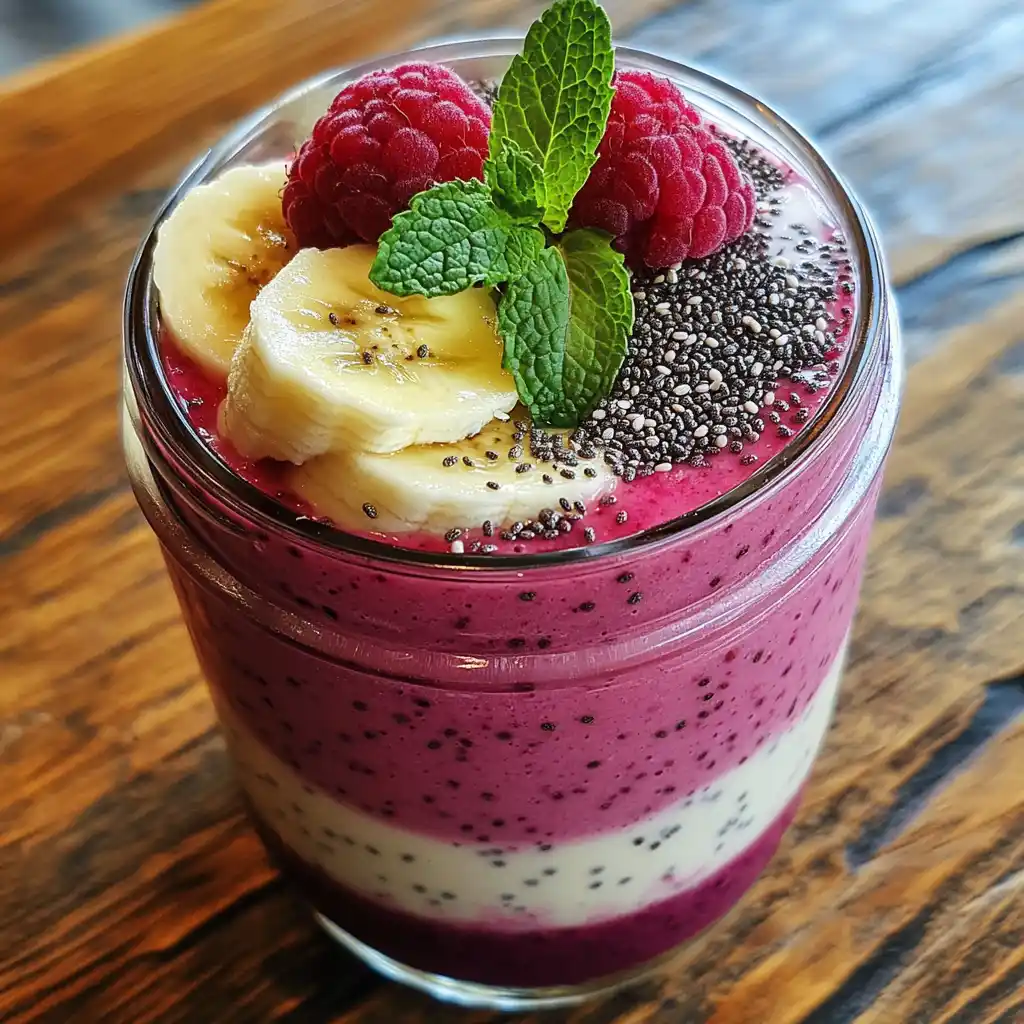
By combining antioxidant-rich blends and low-sugar fruits, you create healthy smoothie recipes that taste amazing and support your health goals long-term.
Weight Loss Smoothies – Facts vs. Myths
Are Smoothies Better for Losing Weight?
One of the most common questions people ask about healthy smoothie recipes is whether they actually help with weight loss. The answer? Yes—when made right. Smoothies can be a powerful tool in a weight loss journey, but only if they’re balanced and portion-controlled.
Here’s how healthy smoothie recipes support weight loss:
- High fiber keeps you feeling full longer, helping reduce snacking
- Protein and healthy fats stabilize blood sugar and reduce cravings
- Whole ingredients give you essential nutrients without empty calories
That said, smoothies can also work against your goals if you’re not careful. Adding too much fruit, sweetened yogurts, fruit juice, or high-calorie toppings can turn a healthy blend into a sugar bomb. It’s easy to go from a 250-calorie snack to an 800-calorie dessert without realizing it.
For effective weight loss, think of your smoothie as a meal, not a drink. Focus on ingredients that nourish and sustain you—like spinach, chia seeds, berries, almond butter, or unsweetened plant milk.
Don’t miss our Healthy Meal Prep Guide to pair your smoothies with other balanced meals for full-day nutrition.
Smart Swaps to Make Smoothies Calorie-Friendly
Small tweaks can make a big difference when it comes to making your healthy smoothie recipes weight-loss friendly. The key is reducing unnecessary sugar and calories without losing flavor or nutrition.
Here are some smart swaps:
| Swap This | For This | Why It Works |
|---|---|---|
| Sweetened yogurt | Unsweetened Greek yogurt | Adds protein, cuts sugar |
| Fruit juice | Unsweetened almond or oat milk | Lowers calorie load |
| Banana (full) | ½ banana + zucchini or cauliflower | Keeps texture, reduces sugar |
| Flavored protein powder | Plain or natural protein | Avoids hidden sweeteners and additives |
| Honey or syrup | Cinnamon or vanilla extract | Enhances flavor without added sugar |
Also, keep portion sizes in check. You don’t need more than one cup of fruit per smoothie. Instead, boost volume with leafy greens or ice.
Looking for inspiration? Try combining a chia base with spinach, frozen berries, half a banana, and unsweetened almond milk—it’s creamy, sweet, and under 300 calories. Plus, it’ll keep you satisfied for hours.
By understanding the facts and applying simple swaps, your healthy smoothie recipes can become a sustainable tool for weight management and long-term wellness.
Green Smoothie Recipes for Detox and Energy
Benefits of Green Ingredients Like Kale, Spinach, and Celery
When you think of healthy smoothie recipes, green smoothies often top the list—and for good reason. Loaded with chlorophyll-rich veggies and detoxifying nutrients, green smoothies support digestion, boost energy, and help eliminate toxins naturally.
Here’s why greens deserve a place in your blender:
- Spinach is mild in flavor but packed with iron, folate, and magnesium. It supports red blood cell production and muscle function.
- Kale is high in fiber, vitamin K, and antioxidants—great for detoxing the liver and fighting inflammation.
- Celery is hydrating and rich in electrolytes, making it an ideal ingredient for post-workout or morning smoothies.
Unlike sugary fruit blends, green smoothies balance sugar with fiber and minerals, providing sustained energy without the crash. They also help alkalize your body, reduce bloating, and promote clearer skin.
If you’re serious about wellness, don’t miss our Chia Water Recipe to pair with your greens. It’s a perfect combo for hydration and gut support.
Three Powerful Green Smoothie Recipes to Try
To help you get started, here are three tried-and-true green smoothie blends that are simple, delicious, and ideal for anyone looking to energize their day or gently detox.
1. Morning Reset Green Smoothie
- 1 cup spinach
- ½ banana
- 1 tbsp chia seeds
- ½ cucumber
- ¾ cup unsweetened almond milk
- Dash of cinnamon
Benefits: Hydrating, good for digestion, lightly sweet
2. Power Greens + Protein Smoothie
- 1 cup kale (stems removed)
- ½ green apple
- 1 scoop plant-based protein powder
- 1 tbsp almond butter
- ¾ cup oat milk
Benefits: Great post-workout, balances protein with greens
3. Citrus Detox Smoothie
- ½ cup celery
- ½ cup pineapple
- Juice from ½ lemon
- 1 handful spinach
- 1 tbsp ground flaxseed
- 1 cup coconut water
Benefits: Refreshing, vitamin C-rich, anti-inflammatory
These green blends keep you full, energized, and refreshed—without relying on added sugars or artificial ingredients. Try rotating one into your weekly smoothie routine and feel the difference.
Green smoothies are an easy way to elevate your healthy smoothie recipes with clean, powerful nutrients that work behind the scenes to keep you balanced and energized.
High-Protein Smoothie Recipes for Fitness Lovers
Why Protein Is Crucial for Post-Workout Recovery
When it comes to healthy smoothie recipes for fitness, one nutrient stands above the rest—protein. Whether you’re lifting weights, running, or doing yoga, your muscles need protein to recover, rebuild, and grow stronger. Adding it to your smoothies not only supports post-workout recovery but also helps keep you full for hours.
Here’s what protein does in your smoothies:
- Speeds up muscle repair after workouts
- Keeps you satisfied longer, reducing cravings
- Stabilizes blood sugar, especially important after exercise
- Supports lean muscle growth while promoting fat loss
Even if you’re not a gym regular, protein is essential for maintaining energy levels and metabolic health. The best part? It’s easy to blend into your routine using natural, accessible ingredients.
Looking for a little recovery boost? Check out our Apple Cider Vinegar Drink for Weight Loss. It complements high-protein smoothies by supporting metabolism and digestion.
Healthy Smoothie Recipes with Protein Powders, Yogurt, or Nut Butters
There are many ways to get protein into your smoothies—both plant-based and dairy-based. Here are a few high-protein ingredients that work well in almost any blend:
- Unsweetened Greek yogurt – Thick, creamy, and full of probiotics
- Nut butters (almond, peanut, cashew) – Adds healthy fats and rich flavor
- Protein powders – Whey or plant-based options are both effective
- Hemp seeds or chia seeds – Small but mighty sources of protein and omega-3s
- Silken tofu – Smooth texture and high protein for vegan options
Here are three easy high-protein smoothie ideas to power your fitness goals:
1. Classic Chocolate Banana Power Smoothie
- 1 frozen banana
- 1 scoop chocolate protein powder
- 1 tbsp peanut butter
- ¾ cup unsweetened almond milk
- Ice (optional)
Perfect for post-strength training. Tastes like dessert, fuels like a meal.
2. Berry Greek Yogurt Blast
- ½ cup Greek yogurt
- 1 cup frozen mixed berries
- 1 tbsp ground flaxseed
- ½ banana
- 1 cup oat milk
Loaded with antioxidants and protein, this smoothie is ideal for morning workouts.
3. Vegan Vanilla Energy Smoothie
- 1 scoop plant-based vanilla protein
- ½ avocado
- 1 tbsp almond butter
- 1 cup almond milk
- Dash of cinnamon or vanilla extract
Creamy, smooth, and entirely plant-based.
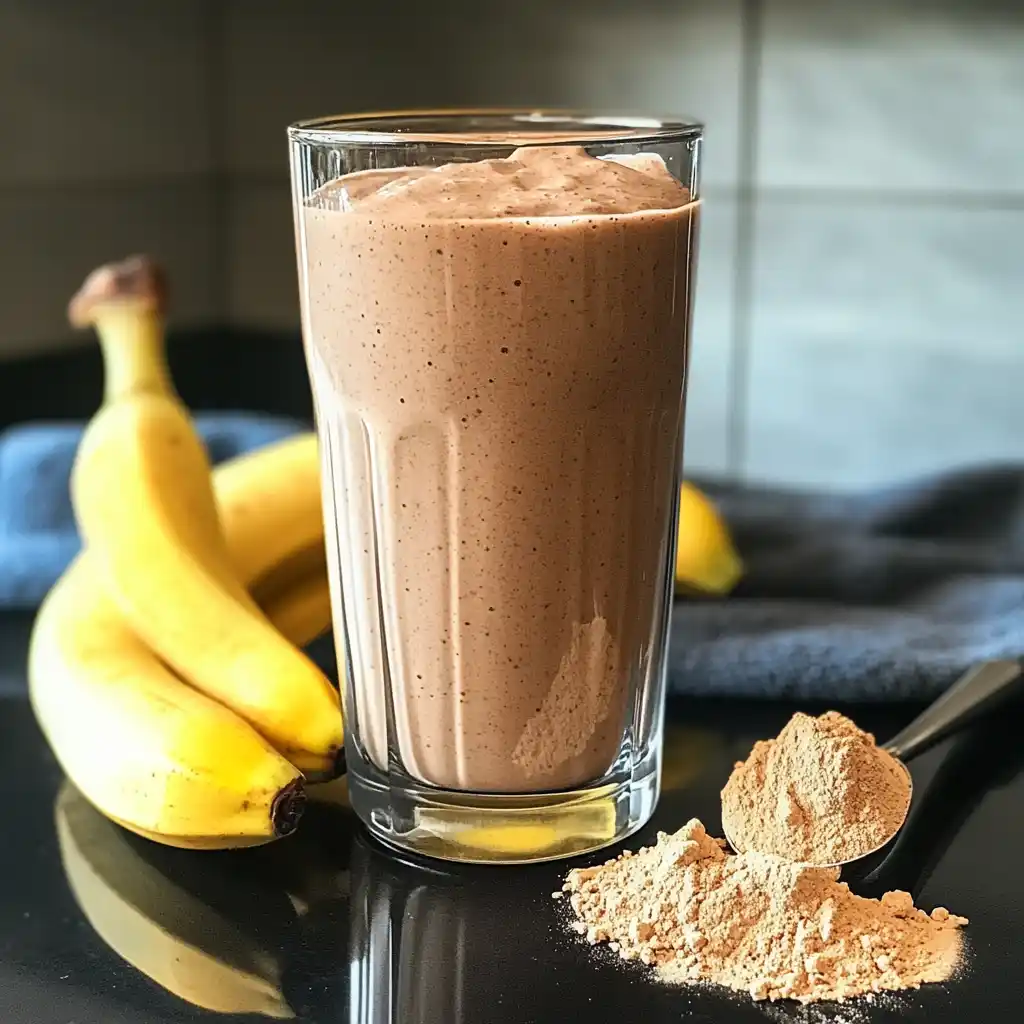
By incorporating these high-protein blends into your routine, you’re not just feeding your muscles—you’re building long-lasting energy, satiety, and support for your active lifestyle. These are the kind of healthy smoothie recipes that do more than just taste good—they work hard for your body, too.
Best Smoothies for Specific Health Goals
Smoothies for Gut Health, Immunity, and Brain Function
What makes healthy smoothie recipes so versatile is how easily you can tailor them to specific wellness needs. Whether you’re focused on digestion, immune support, or mental clarity, certain ingredients work better than others to help you meet those goals—deliciously.
For Gut Health:
A healthy gut supports everything from immune defense to mood regulation. Use fermented ingredients like kefir or plain Greek yogurt, and fiber-rich additions such as chia seeds, flaxseed, and leafy greens. Ginger is another gut-loving option—it soothes digestion and reduces inflammation.
Gut-Healing Smoothie Idea:
- ½ cup plain kefir
- 1 banana
- 1 tbsp ground flaxseed
- 1 handful spinach
- ½ tsp fresh ginger
- ¾ cup almond milk
For Immunity:
To keep your immune system strong, load up on vitamin C and antioxidants. Citrus fruits, berries, carrots, and turmeric are standout ingredients for these types of healthy smoothie recipes. Add a pinch of black pepper when using turmeric to enhance absorption.
Immunity-Boosting Smoothie Idea:
- 1 orange (peeled)
- ½ cup strawberries
- 1 small carrot (peeled and chopped)
- ½ tsp turmeric
- 1 cup coconut water
For Brain Function:
Fueling your brain means including healthy fats and antioxidants. Avocados, blueberries, walnuts, and even matcha can improve memory, focus, and cognitive clarity. Pair them with greens for added support.
Brain-Boosting Smoothie Idea:
- ½ avocado
- ½ cup blueberries
- 1 tsp matcha powder
- 1 tbsp walnut pieces
- 1 cup oat milk
Want more brain-boosting ideas? Don’t miss our lesser-known Shiitake Mushrooms Guide, where you’ll discover unexpected ingredients that support mental health.
Customized Recipes Based on Personal Wellness Needs
The beauty of smoothie-making is its ability to evolve with your lifestyle. Here’s a breakdown of healthy smoothie recipes tailored to common personal health goals:
| Goal | Key Ingredients | Best Add-Ins |
|---|---|---|
| Weight loss | Spinach, berries, almond milk | Chia, protein powder |
| Energy boost | Bananas, matcha, almond butter | Maca, coconut water |
| Muscle recovery | Greek yogurt, banana, oats | Peanut butter, whey protein |
| Hormone balance | Berries, flaxseed, almond milk | Maca powder, avocado |
| Anti-inflammatory | Pineapple, turmeric, ginger, spinach | Black pepper, coconut milk |
It’s all about being intentional. By understanding what your body needs and picking ingredients with that purpose in mind, you can build healthy smoothie recipes that truly support your goals—without sacrificing taste or simplicity.
Common Mistakes to Avoid with Healthy Smoothie Recipes
Hidden Sugars and Overloading Calories
Even the best intentions can go sideways when it comes to crafting healthy smoothie recipes. A few wrong moves—too much fruit, added sweeteners, or large portion sizes—can turn your nutrient-packed smoothie into a calorie bomb that spikes your blood sugar and leaves you crashing.
Here are some of the most common smoothie mistakes:
- Using too much fruit: Yes, fruit is healthy—but it’s also high in natural sugars. Overloading your blender with bananas, mangoes, or grapes can lead to excessive carb intake.
- Adding flavored yogurt or fruit juice: These often contain hidden sugars and preservatives. Stick with plain Greek yogurt or unsweetened non-dairy milk.
- Using large portions: Smoothies should be portion-controlled, especially if they’re meant as a snack. Measure ingredients to avoid adding more calories than you need.
- Relying on “healthy” add-ins: Ingredients like honey, agave, granola, or dried fruit may seem clean but are sugar dense and unnecessary when fruits already provide sweetness.
To fix this, keep your recipes simple, balanced, and intentional. Follow the Rule of 3 we discussed earlier: one fruit, one vegetable, one protein/fat. Want a deeper breakdown on flavor vs. nutrition? Check out our under-the-radar Caramelized Onions Guide, which shows how easy it is to overdo “healthy” ingredients.
Blending Tips for Texture, Flavor, and Nutrition
Making healthy smoothie recipes at home means you get to control every part—from texture to taste to nutrient quality. But if your smoothies are watery, chalky, or lumpy, you’re not doing yourself any favors. Here’s how to fix that:
1. Layer your ingredients correctly: Start with liquids at the bottom, followed by soft items like bananas or yogurt, and finish with frozen fruit, greens, or powders. This improves blending efficiency and texture.
2. Use frozen fruit instead of ice: Ice can water down the flavor and create separation. Frozen fruit gives you a thick, creamy texture and helps keep the smoothie cold.
3. Blend in stages: Blend your greens and liquid first to avoid leafy chunks, then add fruit and thicker ingredients. This step-by-step approach leads to a smoother, silkier blend.
4. Don’t forget the flavor boosters: Cinnamon, vanilla extract, ginger, lemon zest, or fresh herbs like mint can elevate the taste of your smoothies without extra calories.
5. Clean your blender immediately: Dried-on ingredients are hard to remove and can affect future smoothie flavor. A quick rinse right after blending keeps everything fresh and ready for next time.
The goal isn’t perfection—it’s making small, smart choices that add up. With a little attention to detail, your healthy smoothie recipes will become not just better tasting, but more nourishing too.
Frequently Asked Questions About Healthy Smoothie Recipes
What are the healthiest things to put in a smoothie?
Leafy greens like spinach or kale for fiber and antioxidants
Low-sugar fruits such as berries, green apples, or kiwi
Protein sources like Greek yogurt, protein powder, or silken tofu
Healthy fats including chia seeds, flaxseeds, nut butters, or avocado
Liquid bases such as unsweetened almond milk, oat milk, or coconut water
Adding a pinch of cinnamon, turmeric, or fresh ginger not only boosts flavor but also enhances health benefits. The key is using real, whole ingredients and avoiding added sugars.
What is the rule of 3 for smoothies?
One Fruit – for flavor and natural sweetness
One Vegetable – for fiber, vitamins, and bulk without sugar
One Protein or Healthy Fat – to keep you full and help regulate blood sugar
This approach ensures you get a complete mini-meal that fuels your body and tastes amazing.
Which is the healthiest fruit smoothie?
½ cup blueberries
½ banana
1 cup spinach
1 tbsp chia seeds
¾ cup unsweetened almond milk
This combination supports heart health, digestion, and energy—all while staying under 300 calories.
Are smoothies better for losing weight?
Replacing high-calorie meals or snacks
Providing lasting satiety from fiber, protein, and fats
Reducing sugar cravings with naturally sweet whole foods
Just be cautious with portion sizes and avoid adding unnecessary sweeteners or high-calorie extras. Blending smarter, not bigger, is the path to success.
Conclusion: Build a Better Day, One Healthy Smoothie at a Time
Healthy smoothie recipes are more than just quick meals—they’re a habit that nourishes your body and mind. By choosing real, whole ingredients and blending with purpose, you create something that supports your energy, digestion, weight goals, and overall wellness.
Whether you’re going green for detox, boosting protein after a workout, or crafting a fruit-filled blend to kick off your morning, smoothies offer endless possibilities. Use the Rule of 3, balance flavor with function, and avoid common mistakes to get the most out of every sip.
Start with small changes—swap juice for almond milk, use frozen berries instead of ice cream, or add chia seeds for fiber. The little things make a big difference.
Looking for inspiration? Try exploring more with these helpful resources:
- Don’t miss our Matcha Chia Pudding Recipe for a high-fiber, protein-rich breakfast idea.
- Check out Healthy Meal Prep Guide to complement your smoothie plan with nutritious meals.
- Discover great ideas like Apple Cider Vinegar Drink for Weight Loss, perfect alongside any weight loss smoothie.
- Learn more about gut-friendly ingredients in our Shiitake Mushrooms Guide—unexpected but powerful.
Now grab your blender, start experimenting, and enjoy building a healthier lifestyle—one smoothie at a time.
For more recipe inspiration and visual guides, check out our curated boards on Pinterest.

